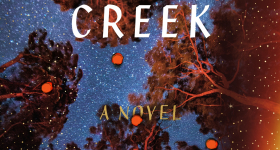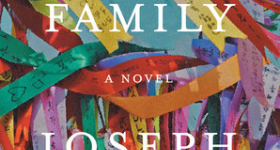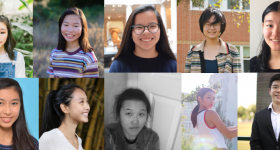In Mary Lynn Bracht’s debut novel White Chrysanthemum, the sounds of the sea, the taste of salt and the cool breeze off the sea’s current permeate the world of Hana, a 12-year-old girl on Jeju Island, South Korea. Hana is becoming a haenyeo, the Korean word for female deep-sea diver. Hana has a younger sister, Emiko, or Emi for short, whom she dotes on. Hana’s mother has guided her on how to dive and breathe underwater. The author describes the mysteries of the deep ocean waters and the peace that diving has given Hana, but danger and disruption also linger in the background. White Chrysanthemum oscillates between two time periods — the Japanese occupation of South Korea (and much of Asia) in the 1940s during World War II, and 2011, when Emi is a much older woman, an omma and halmoni (Korean words for mother and grandmother) and a haenyeo herself. The novel describes the physical and deeply emotional distance between sisters who lead two very different lives separated by war, physical trauma and abuse, and geography.
Emi has dreams of a distant boat caught in the waves, large sea creatures, a voice and a girl: “Emi lets out a silent scream as the girl tumbles overboard, swallowed by a great blue whale that is sometimes a gray squid and at other times a terrifying shark, but last night, it was a whale, midnight blue with razor-sharp teeth like a monster. Then she awoke, clutching her throat, parched and sweating, and the dream faded from her waking memory, leaving her with an image of a girl lost to a war long ago.” Emi is haunted by this girl, someone she searches for both in her dreams and in real life on Jeju Island and in Seoul. Emi leaves Jeju Island early in the novel to visit her grown children and grandson in South Korea’s capital city. There, she is on a mission to find this girl: “There is somewhere she [Emi] needs to be, and time is not on her side.”
Emi’s daughter, YoonHui, and her partner Lane, both professors at a local university, accompany Emi to the One Thousand Wednesdays demonstration in front of the Japanese Embassy. The narrative explains, “The weekly demonstrations began in 1992, and today, the 1000th Wednesday, there is still no resolution for the surviving women.” Prior to joining the demonstration, in which Emi has been an active participant, YoonHui asks her if she was a comfort woman during the war. It was a question YoonHui has resisted asking for years. Emi says, “It was a long time ago, during the war; the Japanese took a girl from our village and she never came back.” During the demonstration, a new monument is revealed to the audience. A young girl wearing a hanbok with no shoes sits in a chair next to an empty chair. Emi collapses at the sight of the girl’s face — it is her sister, Hana.
Hana is abducted from the shores of Jeju Island in 1943 by Corporal Morimoto, a man who would terrorize her for the rest of her life. Along with other young girls, Hana is swiftly taken away by truck, ferry and then train to Manchuria. She is continually raped by Morimoto on this long journey, and he develops a frightening obsession with her. Hana meets other young girls from many parts of Korea and attempts to protect the youngest and smallest of them from the Japanese soldiers but often fails to do so — the physical power of the Japanese soldiers is too much. Along the way to Manchuria, Hana recalls her mother warning her about Japanese soldiers raping young women and forcing them to serve the Japanese military as comfort women. She recalls another memory: while diving with her mother, her mother tells Hana that if she sees Emi on the shore she will always be able to safely return to shore. This memory returns throughout the novel. As Hana envisions a young Emi on the shore, Emi feels the connection even in 2011.
Bracht’s novel is a gripping story that successfully places history into a meaningful contemporary context. There are moments when the novel is hard to read. The trauma and terrorism that comfort women experienced is detailed throughout the novel. As a mixed Korean American woman, I experienced fear, anger and sadness while reading these scenes as I wondered what my grandmother and her parents experienced during the Japanese occupation and the Korean War. I picture my halmoni, sitting quietly across a table from me in complete silence, looking at me. I wonder what her childhood was like.
There are so many unknowns for younger post-war generations who are trying to break through iron gates of anger, sadness and shame. The character I most identified with in this novel is YoonHui, Emi’s daughter, who is seeking some truths into her family history. To me, YoonHui symbolizes post-war generations reconciling the past, caring for quickly aging generations and taking on the difficult responsibility of living with this traumatic past without official recognition or apology from Japan. Through Hana and Emi’s difficult lives during World War II, the Jeju Uprising and the Korean War, readers are immersed in the costs of being a Korean woman during these times in history. By the conclusion of the novel, the emotions I had gave me insight into the trauma my halmoni could have gone through, but more deeply than that, what a nation has gone through and continues to live with even today.










Comments